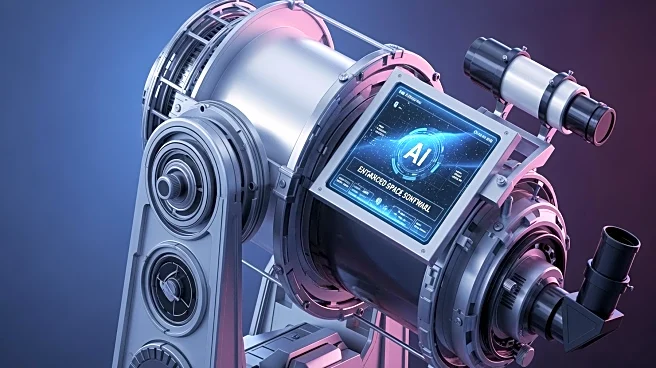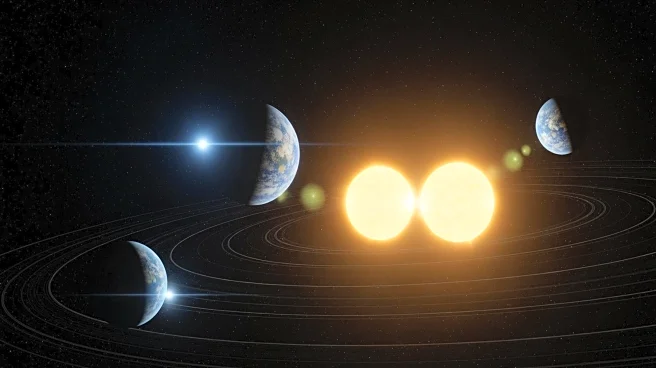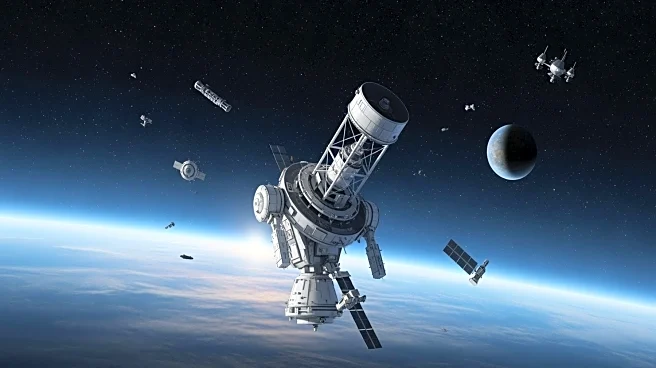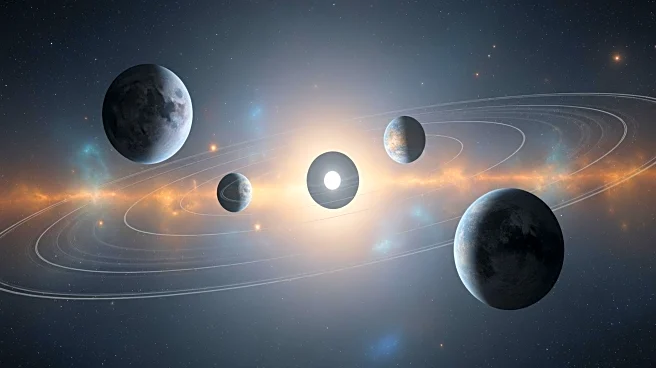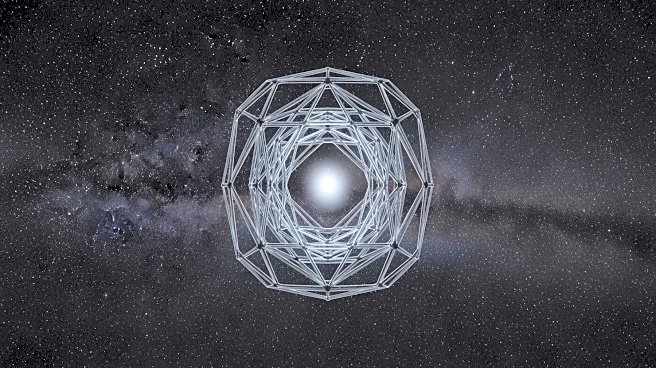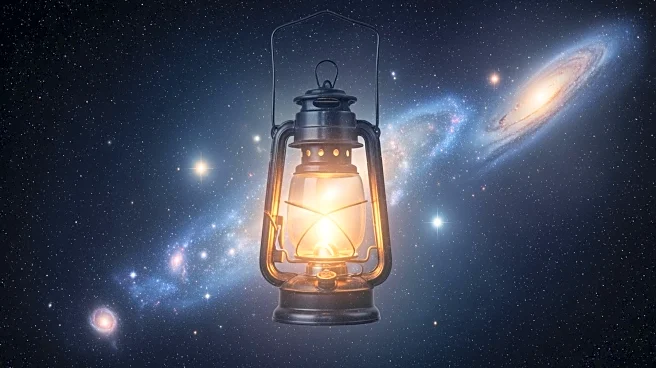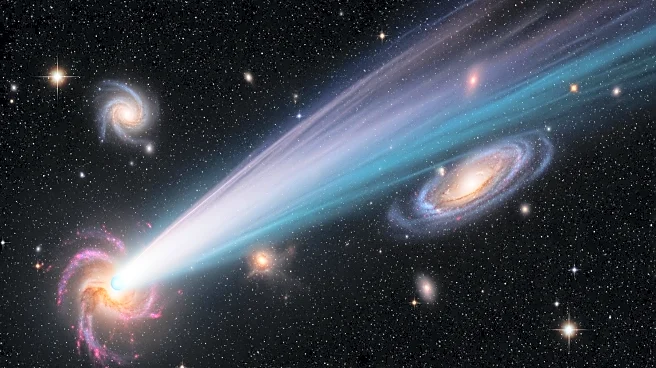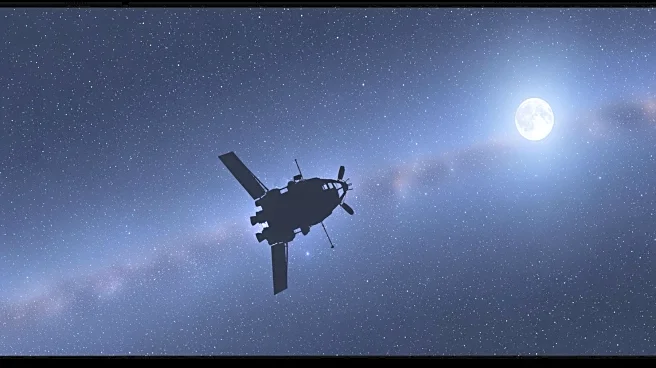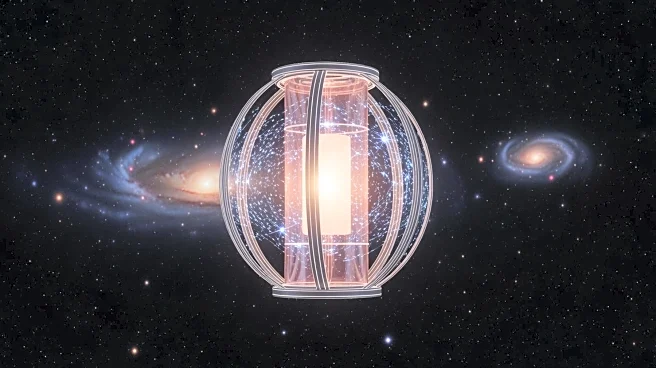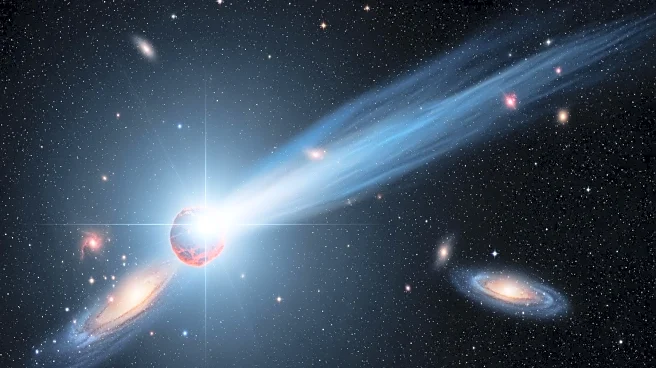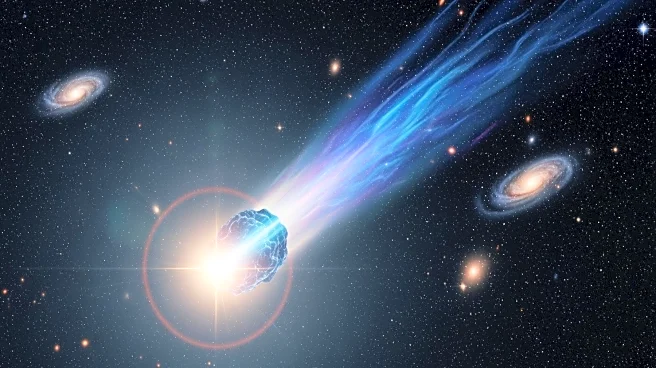What's Happening?
Researchers from the University of Sydney have developed a software solution that restores the precision of the James Webb Space Telescope (JWST), correcting blurriness in its images. This breakthrough was achieved by PhD students Louis Desdoigts and
Max Charles, who devised a calibration technique using advanced simulations and neural networks. The software, named AMIGO, addresses distortions in the telescope's infrared camera detector, caused by a phenomenon known as the brighter-fatter effect. This innovation eliminates the need for costly astronaut repair missions, allowing the telescope to capture ultra-high-resolution images of celestial objects.
Why It's Important?
The restoration of the JWST's imaging capabilities through software innovation is a significant achievement in space science. It demonstrates the potential of artificial intelligence to solve complex problems remotely, reducing the need for physical interventions in space. This advancement enhances the telescope's ability to observe distant celestial bodies with greater clarity, providing valuable data for astronomers and researchers. The improved imaging capabilities could lead to new discoveries in astrophysics, such as detailed observations of exoplanets, black holes, and other cosmic phenomena. The success of this project also highlights the role of international collaboration and innovation in advancing space exploration.
What's Next?
With the successful implementation of the AMIGO software, the James Webb Space Telescope is expected to continue delivering high-quality images, contributing to ongoing research and exploration efforts. The research team plans to make the new code available to other scientists working with the JWST, potentially leading to further enhancements in its observational capabilities. As the telescope continues to operate, it may uncover new insights into the universe, aiding in the study of phenomena such as star formation, galaxy evolution, and the search for extraterrestrial life. The project also sets a precedent for future space missions, where software solutions could play a crucial role in maintaining and enhancing the performance of space-based instruments.
Beyond the Headlines
The use of AI to restore the JWST's vision underscores the growing importance of software solutions in space exploration. This approach not only saves time and resources but also opens up new possibilities for remote problem-solving in space missions. The success of this project may inspire similar initiatives in other areas of space science, where AI and machine learning can be leveraged to optimize the performance of instruments and analyze vast amounts of data. Additionally, the project highlights the potential for academic institutions to contribute significantly to global scientific endeavors, showcasing the impact of innovative research on a worldwide scale.
